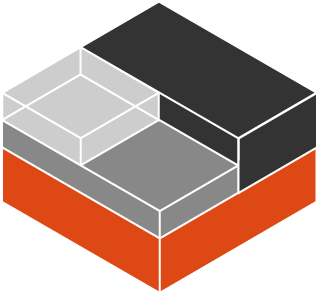FullStack Agent is an innovative AI-powered platform that enables users to create, develop, and deploy full-stack web applications through natural language interaction. Built on top of Claude Code CLI and Kubernetes, it provides isolated sandbox environments for secure and scalable application development.

- 🤖 AI-Powered Development: Leverage Claude Code to build applications using natural language
- 🔒 Isolated Sandboxes: Each project runs in its own Kubernetes-managed container environment
- 🗄️ Automatic Database Provisioning: PostgreSQL databases created on-demand using KubeBlocks
- 🌐 Web-Based Terminal: Integrated ttyd terminal for direct environment access
- 🔐 GitHub Integration: Seamless code repository management and version control
- ⚡ Real-time Progress Tracking: Visual feedback during sandbox creation and deployment
- 🎨 Modern UI: Built with Next.js 15, Tailwind CSS v4, and Shadcn/UI components
- Framework: Next.js 15.5.4 (App Router)
- Language: TypeScript
- Styling: Tailwind CSS v4
- UI Components: Shadcn/UI
- State Management: React Hooks
- Runtime: Node.js
- API: Next.js API Routes
- Database ORM: Prisma
- Authentication: NextAuth v5 with GitHub OAuth
- Container Orchestration: Kubernetes
- Database: PostgreSQL (via KubeBlocks)
- Web Terminal: ttyd
- Container Image: fullstack-web-runtime (Custom Docker image with development tools)
- Node.js 20.x or higher
- PostgreSQL database
- Kubernetes cluster with KubeBlocks installed
- GitHub OAuth application credentials
- Clone the repository:
- Install dependencies:
- Set up environment variables:
Create .env.local file:
- Set up Kubernetes configuration:
Place your kubeconfig file in .secret/kubeconfig
- Set up Claude Code environment:
Create .secret/.env file with your Anthropic API credentials:
- Initialize the database:
- Run the development server:
Open http://localhost:3000 to access the application.
The platform creates the following Kubernetes resources for each project:
-
Database Cluster (KubeBlocks):
- PostgreSQL 14.8.0
- 3Gi storage
- Auto-generated credentials
-
Sandbox Deployment:
- Custom fullstack-web-runtime image
- Claude Code CLI pre-installed
- Web terminal (ttyd) on port 7681
- Application ports: 3000, 5000, 8080
-
Services & Ingress:
- Internal service for pod networking
- HTTPS ingress with SSL termination
- WebSocket support for terminal
Default resource allocation per sandbox:
- CPU: 200m limit, 20m request
- Memory: 256Mi limit, 25Mi request
- Storage: 3Gi for database
- Manages all Kubernetes operations
- Creates databases and sandboxes
- Handles pod lifecycle management
- GitHub OAuth integration
- Session management
- User authorization
- Prisma ORM configuration
- Connection pooling
- Authentication: GitHub OAuth ensures only authorized users can access the platform
- Isolation: Each sandbox runs in its own Kubernetes namespace
- Secrets Management: Sensitive data stored in Kubernetes secrets
- Network Policies: Sandboxes isolated from each other
- Resource Limits: Prevents resource exhaustion attacks
We welcome contributions! Please see our Contributing Guidelines for details.
- Fork the repository
- Create a feature branch
- Make your changes
- Run tests: npm test
- Submit a pull request
This project is licensed under the MIT License - see the LICENSE file for details.
- Anthropic for Claude Code
- Sealos for Kubernetes platform
- KubeBlocks for database management
- ttyd for web terminal
- GitHub: @FullstackAgent
- Issues: GitHub Issues
100% AI-generated code. Prompted by fanux. Thanks for Claude code & Opus & Sonnet 4.5 & GLM
.png)








